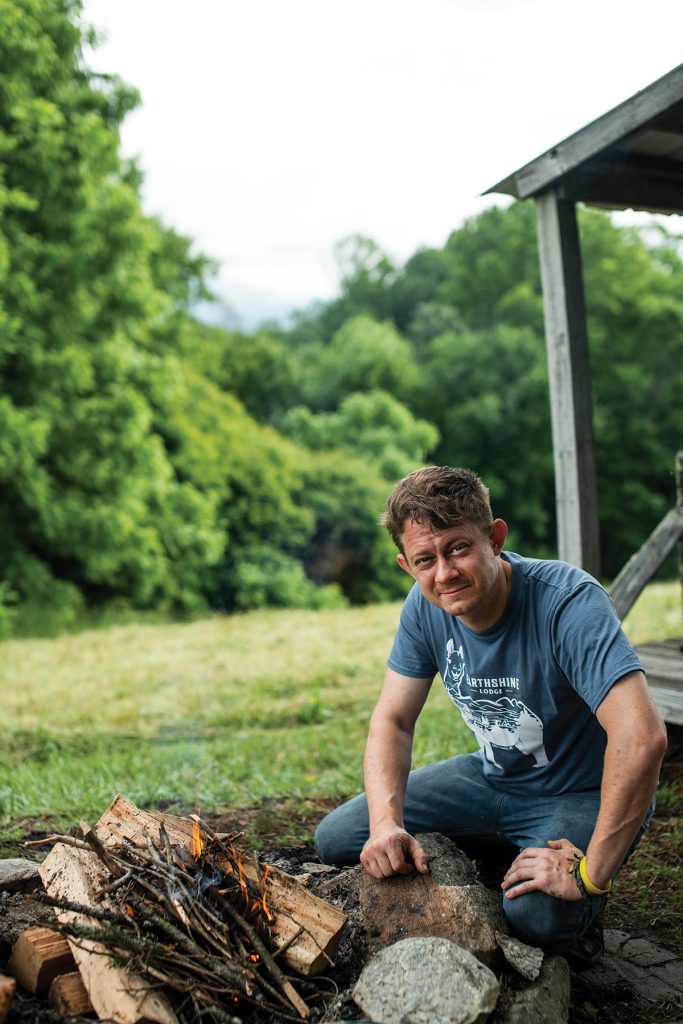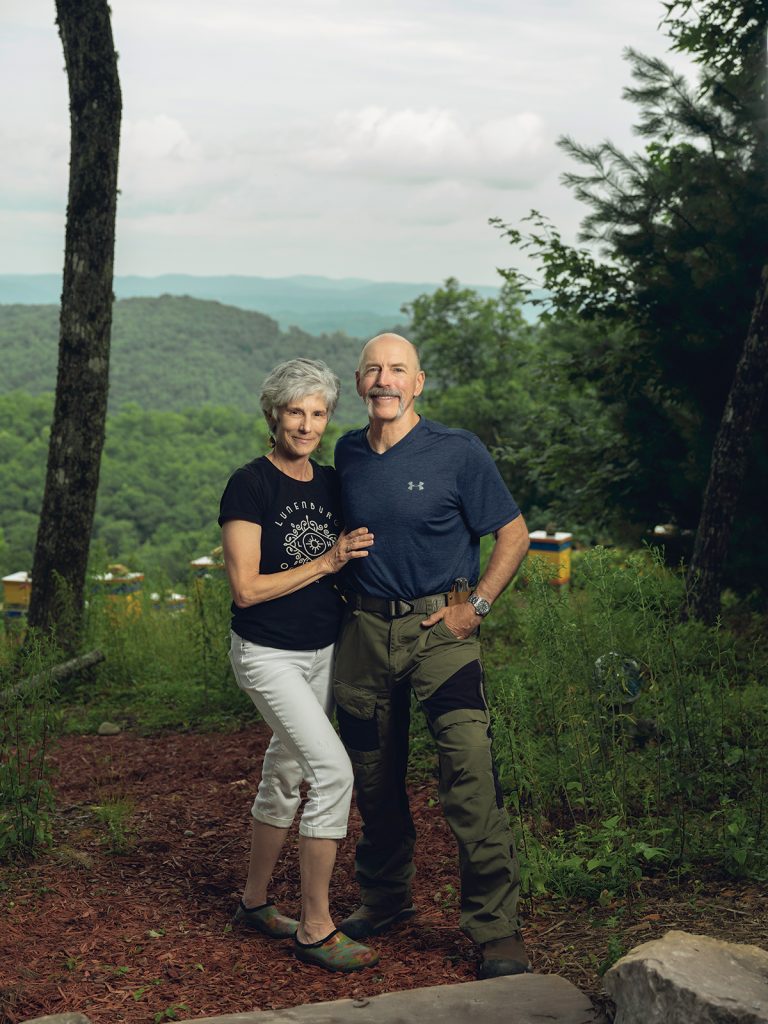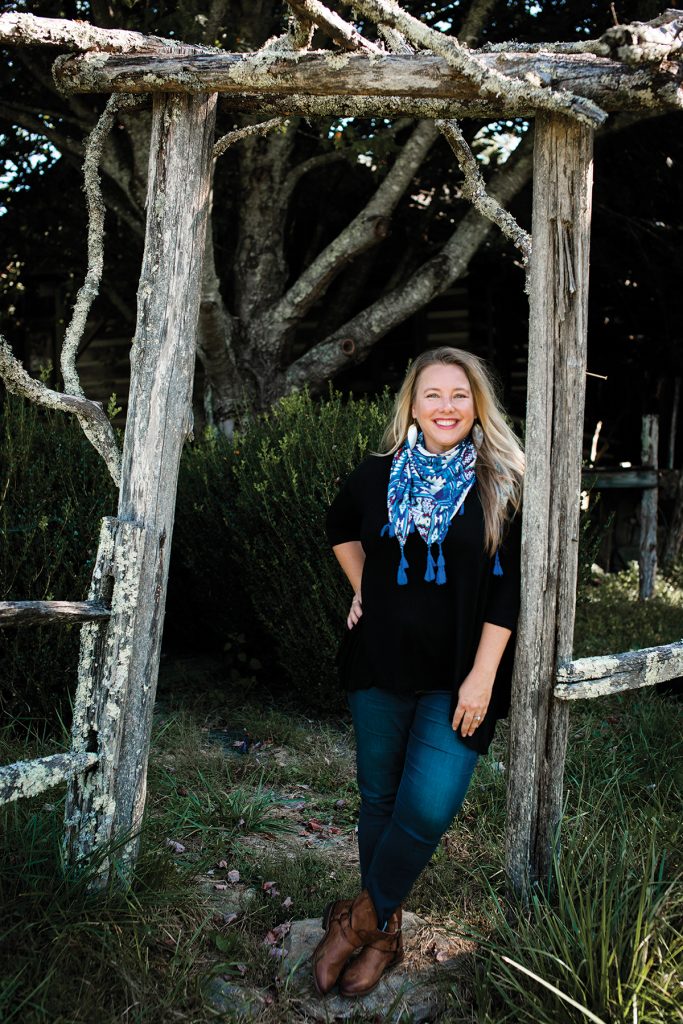The surprising secrets behind safer (but more effective) campfires

Moriah Geer-Hardwick is an expert fire builder.
Photo by Karin Strickland
Moriah Geer-Hardwick isn’t a pyromaniac. But when the outdoor educator talks about flames, there’s no denying his burning fascination with fire.
“For thousands of years, humans have lived here in the Blue Ridge, and fire has undeniably been an essential part of our lives,” he states. “From the indigenous peoples, like the Cherokee, to modern visitors from all over the world, fires have provided for our physical needs, like food and warmth, but also our emotional and spiritual needs, like storytelling and community.” Geer-Hardwick is a lead program instructor at Earthshine Lodge, a mountain retreat and outdoor-education center in Lake Toxaway.
In short, a crackling campfire is about more than hot dogs skewered on maple twigs. That much will become evident during “How to Build the Ultimate Campfire and S’more Making,” a two-hour workshop led by Geer-Hardwick this summer. During the event, Geer-Hardwick will get back to basics, teaching guests how to ignite a campfire using primitive bow drills, flint and steel, or matches. The most modern tool he employs is a trusty disposable lighter. Though plenty of “glampers” rely on shortcuts like store-bought fire starters and flammable liquids, these first-world conveniences often aren’t available in survival situations.

Photo by Karin Strickland
According to Geer-Hardwick, if you find yourself in a pinch, you need to start gathering the right materials. Square one is tinder — highly flammable, fibrous materials like dried tulip-poplar bark. Next, find light kindling such as dry sticks, about the same diameter as a matchstick; medium kindling, or sticks as thick as a pinky finger; and fuel like split wood or cut branches, about as wide as a wrist.
“Inexperienced fire builders burn through the lighter [weight] materials because they haven’t taken the time to build a structure that balances their fuel with oxygen,” explains Geer-Hardwick. “Fires burn upward, so stacking your materials in order of lightest to heaviest is a good practice.”
There’s also some confusion about the practice of blowing on a fire. Go at it like a birthday candle — a hard huff — and the fire will extinguish. However, “if you push a long, steady stream of breath into the heart of your fire towards the embers,” says Geer-Hardwick, you feed more oxygen to the flames. In doing so, even elevated camp foods — imagine grilled corn or BBQ-glazed ribs — will cook more consistently. “And if you think there’s only one way to make a s’more, you really need to come see how we do things here on the mountaintop,” adds the educator.
Of course, an outdoor fire isn’t all fun and roasted marshmallows. As demonstrated by the 2016 Party Rock Fire, an incident caused by a cigarette that devastated some 7,000 acres near Lake Lure, a single spark can wreak major havoc. Because of this, Geer-Hardwick imbues a certain thoughtfulness during his workshops.
“Maybe consider why you’re building a fire in the first place,” he suggests. “Storytelling? S’mores? Survival? Maybe you just want to push back the cool mountain air [at nighttime].” He notes that a smaller campfire not only requires less resource gathering, it also “provides plenty of heat and light, without the hassle of constant attention — or the risk of losing control.”
“How to Build the Ultimate Campfire and S’more Making” is an all-ages, recurring event happening this month on Wednesday, July 7 and Wednesday, July 21, from 10am-noon, at Earthshine Lodge (1600 Golden Road, Lake Toxaway). $15. For more information, visit earthshinenc.com.



